Tom’s Hardware Best Of Computex 2017
Tom's Hardware Goes To Computex
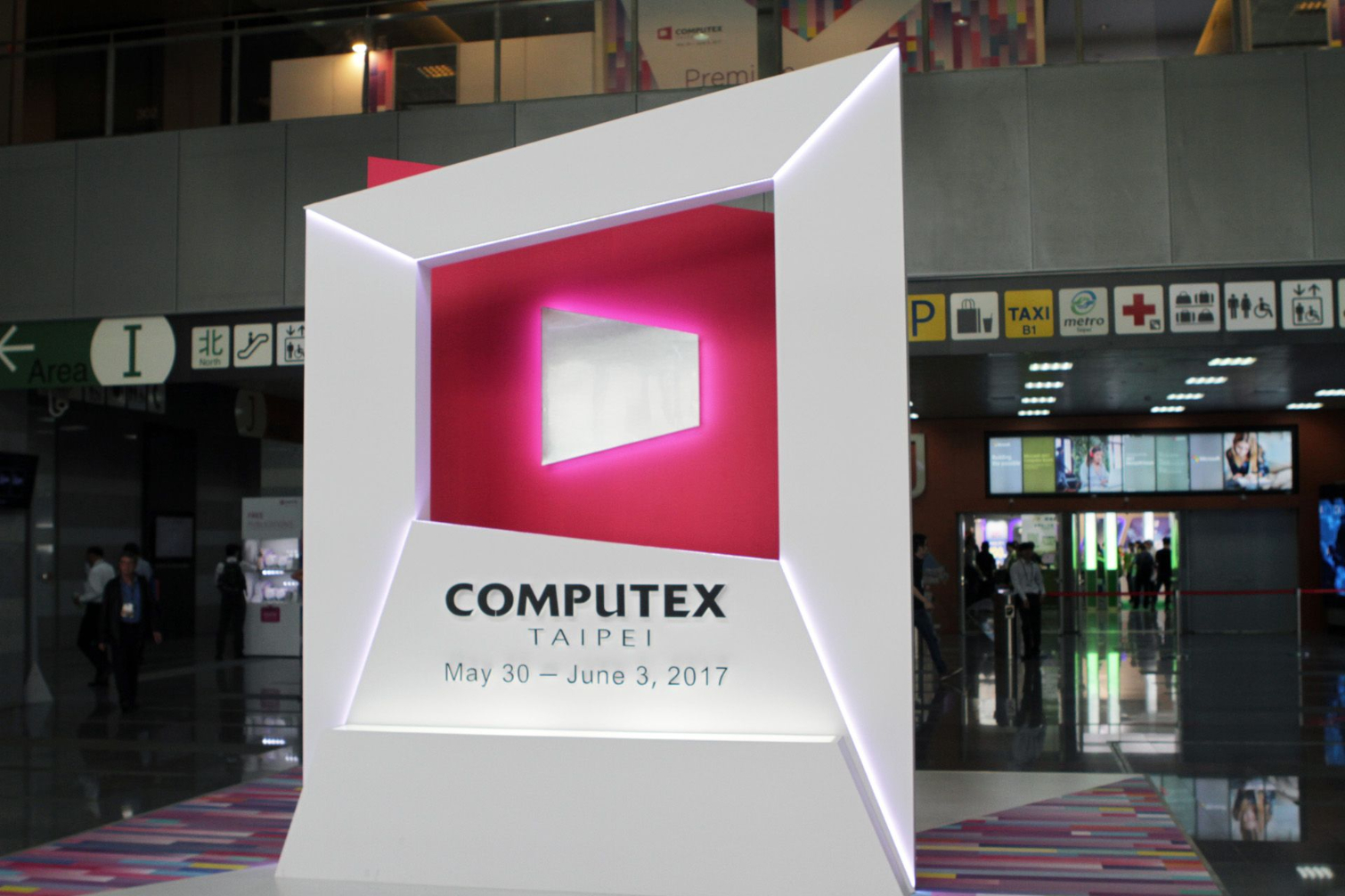
The Tom’s Hardware team traveled to Taipei for Computex 2017 to bring you all of the latest developments in the enthusiast categories that matter most. Even with several of us on the ground, and more of us back home helping out, we couldn’t see every company, let alone all of the products. But we strive for it just the same.
What follows is a compilation of the best things we saw at the show with our own eyes, touched with our own hands. Granted, we haven’t tested any of these, but we know what we like when we see it. And for many of the items that follow, we do have plans to put the products through their paces.
We found plenty of trends at this year’s show, including the newest in super-thin gaming laptops and the RGBing of everything, the promise of high end CPUs and motherboards and chipsets to support them, advancements in mechanical keyboards and PSUs, and more. But most of all, this show hammered home the fact that the PC industry is still growing, at least for the enthusiasts among us.
And make sure to read all of our Computex 2017 coverage on our Computex landing page.
Best PC Concept
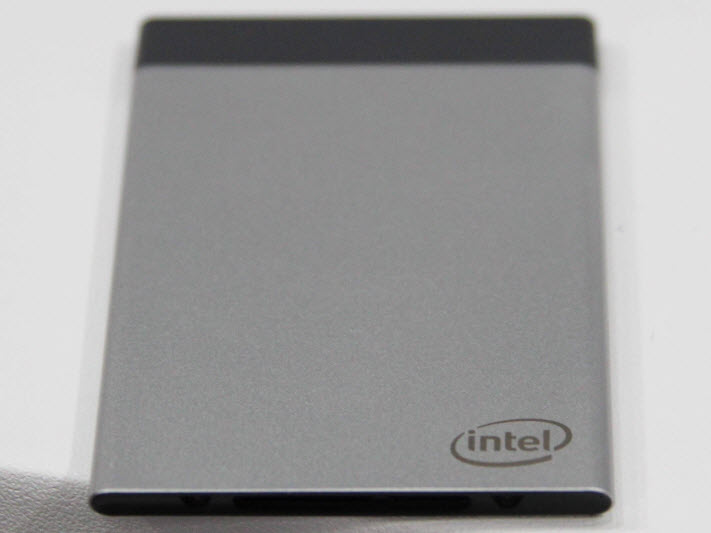
Intel Compute Card
Intel originally announced its Compute Card earlier this year at CES and outlined its plan to use it in a wide range of devices. The concept is simple: cram an SoC, storage, and connectivity into a small 94.5 x 55 x 5mm package that you can use in a wide variety of devices, including tablets, laptops, AIOs, refrigerators (yes, seriously), and IoT gateways.
When newer Compute Cards with beefier processors, storage, and connectivity become available, you simply eject the old card and insert a new one to provide more performance within the same device. That extends the lifecycle of “disposable” computing devices.
Get Tom's Hardware's best news and in-depth reviews, straight to your inbox.
The concept is sound, but the size of the package is limited. As such, it was surprising that Intel managed to pack in up to a Core i5-7Y57, 4GB of DDR3, a 128GB SSD, and Intel Wireless-AC 8265 (2x2.11ac & Bluetooth 4.2) into the slim new form factor. It’s also impressive considering the card apparently has no heat dissipation apparatus.
A slew of partners have signed on to construct new devices around the replaceable cards, and more will follow. We’ve already seen new AIOs from ECS at Computex 2017, but even more intriguing, Dell, HP, and Lenovo plan to introduce new products soon. If Intel’s plan works, you won’t have to upgrade your laptop every three years--you’ll just slip in a new card and continue working.
Best Win For Consumers
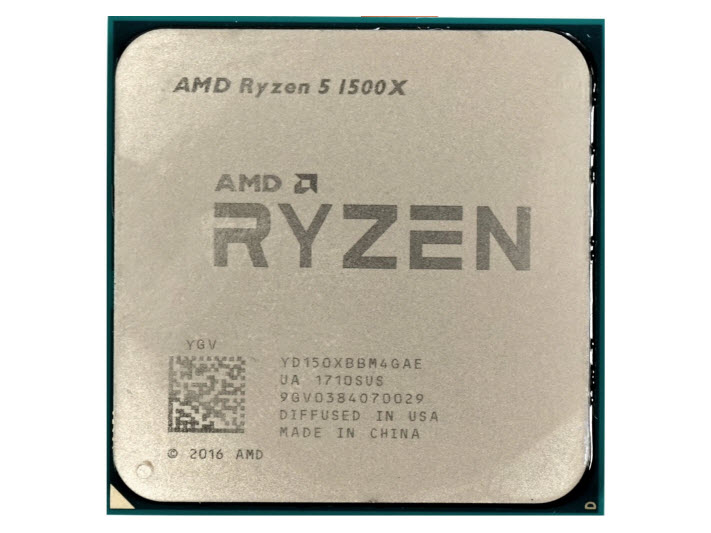
Competitive CPU Market
A competitive CPU market has been one of the biggest no-shows at Computex for the last decade, but AMD’s Ryzen has changed that spectacularly. The company’s low-cost Ryzen processors have brought a new level of excitement to the enthusiast space, and they also apparently forced Intel to respond in kind.
AMD has its promising 16C/32T ThreadRipper processors poised to attack Intel’s HEDT dominance, but Intel isn’t sitting idly by. The company one-upped AMD and announced a new Skylake-X lineup with more cores and threads while it simultaneously slashed prices. Intel also wants to lay any question of its multi-threaded performance to rest, so it made a few architectural tweaks to increase performance.
AMD responded in kind by divulging that it offers up to 64 PCIe lanes on its new lineup, thus disrupting Intel’s product segmentation strategy that sees the company offering only 44 PCIe lanes on its most expensive SKUs.
Computex was awash with new X299 motherboards for Intel’s Skylake-X and Kaby Lake-X processors and AMD’s new X399 motherboards for the creatively-named ThreadRipper. Both new HEDT platforms promise to bring unique high-performance options, but we’ll learn more as they come to retail.
It’s refreshing to see the return of competition. Intel’s suddenly found motivation to make changes that it could have arguably made long ago, and AMD has a solid lineup of new competitors. Now, both companies have to find a way to compete for customers, which usually equates to lower price tags.
The real winner? You.
Most Vague Announcement
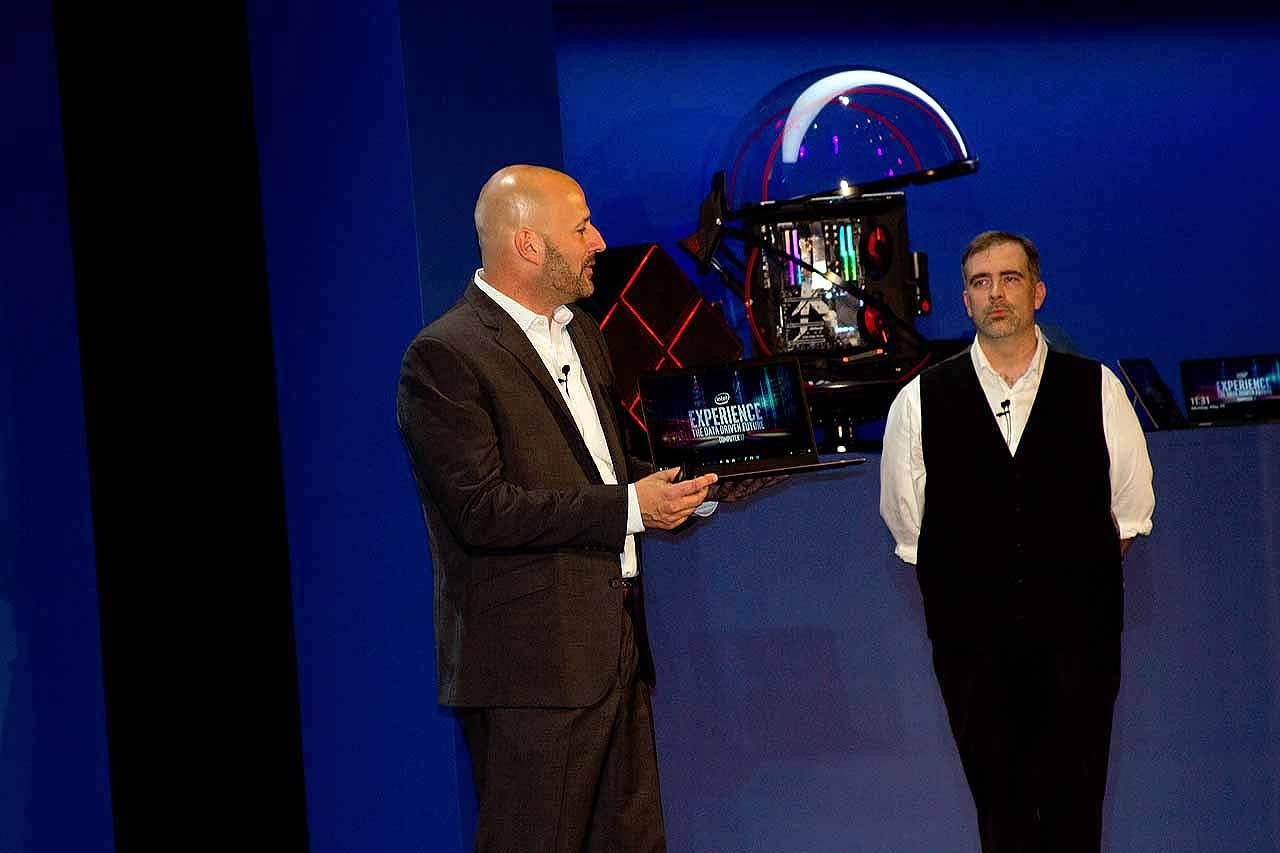
30% Performance Improvement
During its keynote, Intel made a brief mention that its 8th generation processors offer up to 30% more performance than its 7th generation products. Of course, many took that to mean IPC-boosting architectural enhancements, but we don’t really know for sure, because Intel unfortunately didn’t provide any context during the keynote.
The press release was equally unclear, but we examined the footnotes and found that the hyperthreaded processors have twice the number of physical cores than the previous generation and a 500MHz increase to the TurboBoost clock. Doubling the number of cores within the same 15W TDP envelope is an impressive achievement, but it kind of takes the shine off of a mere 30% performance increase.
The catch? Intel didn’t run the tests on the final product it brought out on stage. Instead, the company used pre-silicon estimates that have a +/- 7% margin of error, so the final product may fall short of projections.
To Intel's credit, it could have emulated a heavily-threaded and unrealistic synthetic benchmark (Cinebench comes to mind) to expose a 50% performance delta, but instead chose to emulate real applications with the SYSmark application.
In either case, the next generation looks promising, but the newly-competitive CPU market might find us more closely reading through ambiguous announcements like these in the future as Intel and AMD jockey for the marketing edge.
Best Case
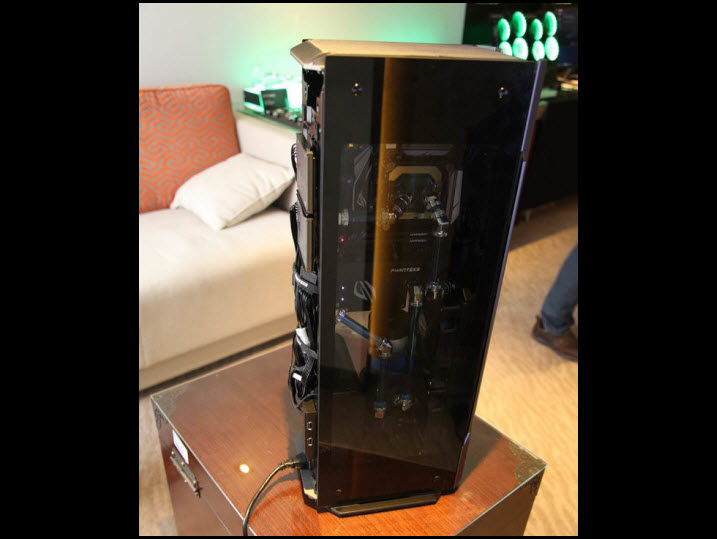
Phanteks Shift
We saw hundreds of cases, some of which stood out for all of the wrong reasons, but most of them didn’t stand out at all. The Evolv Shift and Shift X from Phanteks, though, stood out (and stood tall) for all the right reasons. These are mini-ITX cases, but they are 480mm and 650mm tall, respectively. They’re built on powder-coated steel chassis with aluminum and tempered glass side panels. And if you’re looking for something different for your ITX build, the Shift in particular should catch your attention.
This is simply a different design concept, where slim and tall rules--yet it doesn’t skimp on features, and it’s quite accommodating of various cooler configurations. Notably, it has a 90-degree motherboard layout, and you can employ a full length graphics card using a riser cable.
The case can also be oriented horizontally, and, yes, it makes use of RGB lighting. Despite its unique approach and form factor, the $110 (Shift) and $160 (Shift X) price tags aren’t particularly outlandish.
Best Cooling

In-Win Mars Cooler
Fans: It’s really hard to get excited by them, especially for a trade show during which we probably see thousands of fans. But the Mars fan from In-Win caught our eye. It’s basically a spot fan, which we haven’t seen in a while. It measures 120 x 120 x 25mm, and its frame and shroud are made of lightweight aluminum. The fan has a 360° rotating hinge that lets you use it with a bit more deployment flexibility. You can mount the Mars in a traditional location, but then you can adjust it it for harder to reach areas. Or you can just sit it on your desk.
Best Tiny Cooling Detail
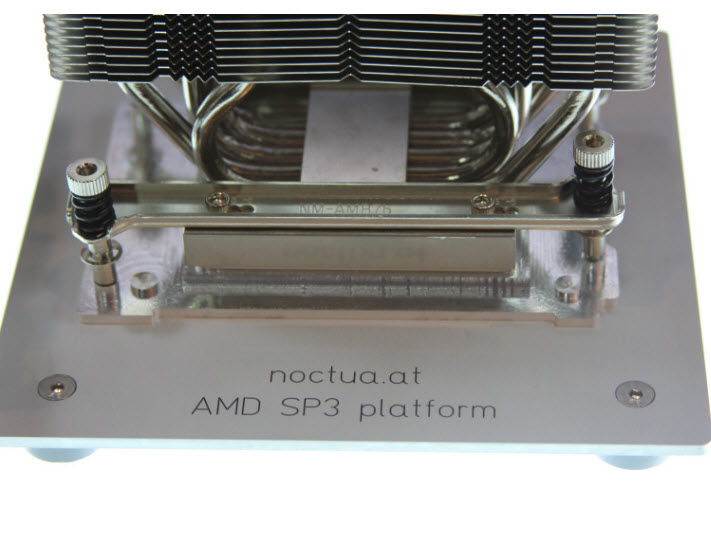
Noctua X399 Heatsink
Not all awards need to blow your mind with pizzazz and panache; sometimes it’s just finding that one small incremental improvement that makes all the difference in the world, and that’s what we found in the Noctua booth, where we spotted an X399 heatsink for the forthcoming ThreadRipper.
Cooling is of utmost importance for the X399 platform, the high end ThreadRipper models have a rumored 180W TDP, and we wild-eyed overclockers will magnify that quickly. ThreadRipper is a massive processor, and as such, the socket area takes up a considerable amount of motherboard real estate--it’s nearly the length of the DIMM slots. That puts nearby PCIe slots in danger of being blocked by CPU coolers.
The Noctua heatsink, however, contains a slotted mounting mechanism that allows you to slide the heat sink to either side, thus clearing enough room for your GPU or other PCIe-powered gear. It's a small but useful feature that’s indicative of the engineering challenges associated with circumventing the problems created by the massive new socket. We can’t wait to hit it with some extra voltage.
Best Annual In-Win Insane Case Award
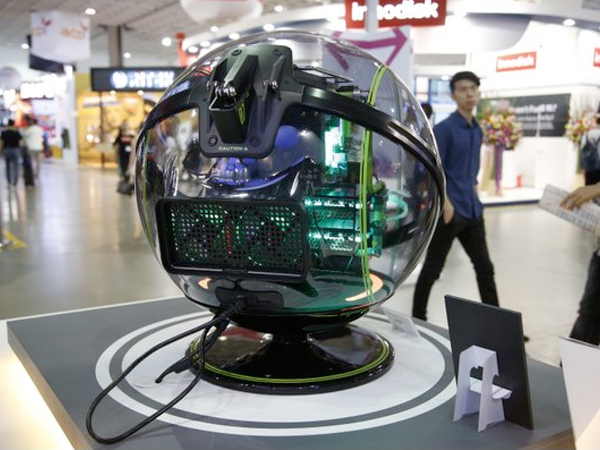
In-Win Winbot
We’ve renamed our Craziest Case award to simply the Best Annual In-Win award, because no matter what, the company will always out-crazy the rest of the field at Computex, and this year was no different. Deepcool’s Quadstellar, among others, gave In-Win a run for its money, but the Winbot was hands-down the case that caused the biggest stir.
Practical issues aside, Winbot has an acrylic dome with a camera module that supports facial and gesture recognition, and it can take selfies. Your gestures or voice commands (issued via Amazon Alexa) can do things like rotate the case in one direction or another. This is just in the concept phase for now--which is likely where it will stay.
Best Use Of Thunderbolt 3
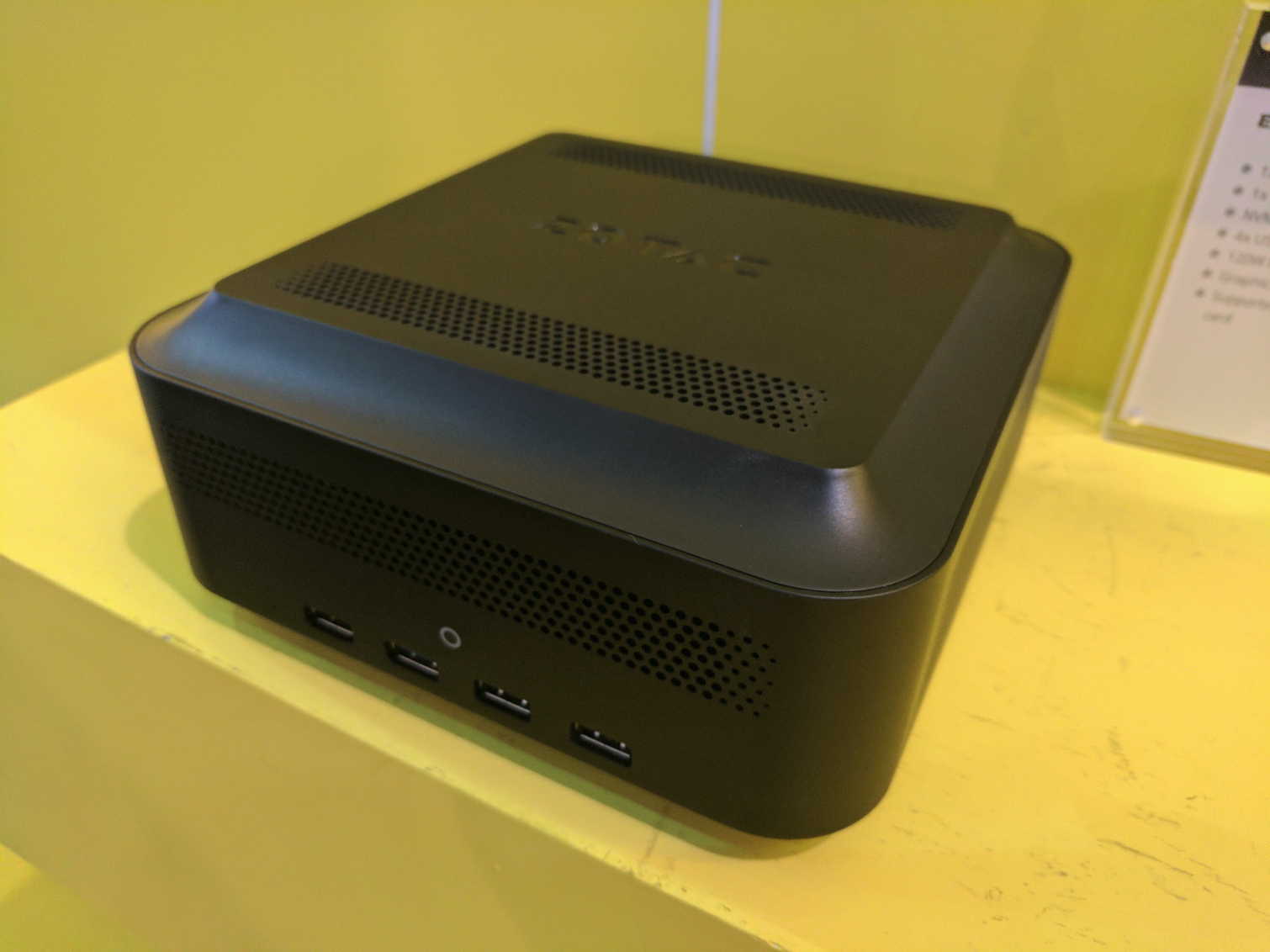
Zotac External Box
External graphics amplifiers have been steadily becoming commonplace in the enthusiast market, with several companies adopting Intel’s Thunderbolt 3 standard for their respective GPU docks. Zotac has taken a different approach to the Thunderbolt 3 external box paradigm, though, by creating a device that houses PCIe storage in addition to small form factor graphics cards. We’re not sure how much of a demand there is for such a device (although we could see it being useful for users seeking faster storage for their laptop), but we appreciate Zotac’s unique implementation of Thunderbolt 3 technology.
Best, First, Only Ryzen Gaming Laptop

Asus ROG Strix GL702ZC
Eight cores, one laptop; that’s the Asus ROG Strix GL702ZC. We were expecting a much bigger splash around mobile Ryzen, especially in the gaming laptop category. In any case, someone had to be first, and it’s a big player: Asus. However, this is not a mobile Ryzen CPU, but a full-on 8c/16t Ryzen 7 1700 part, coupled with a Radeon RX580 GPU, driving a 17.3” FHD display.
In other words, it’s a typical powerful gaming laptop, just with AMD parts.
We don’t yet have an idea of when it will ship or how much it will cost, but for the sake of variety and competition (we’ve reviewed dozens of Intel/Nvidia gaming laptops), we hope this is the start of something new.
Best Gaming Laptop
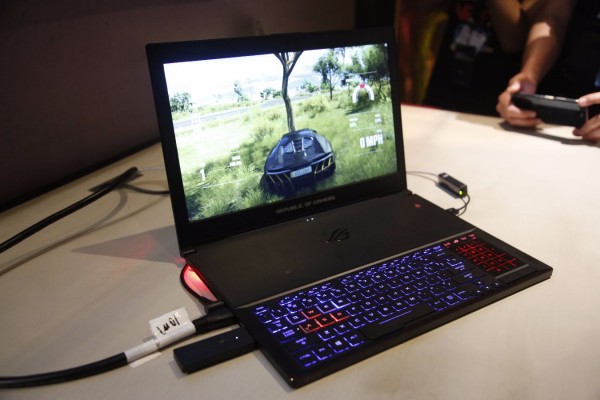
Asus Zephyrus
Years ago, Computex wasn’t really the place where gaming laptops were announced, but the first few days of this year’s show were dominated by them. Many were simply upgraded models with a few design tweaks, but one that stood out was the Zephyrus from Asus.
Nvidia trotted out this gaming laptop as an example of its Max-Q design, which the company announced at Computex (more on those here). Although the specifications for this laptop are a dime a dozen, that they fit so neatly into this amazingly thin gaming laptop is a bit mind-boggling--it’s 0.7” at its thickest point. And if it lives up to Nvidia’s promises for Max-Q, it’ll be extremely quiet and cool, as well.
It does have a number of interesting cooling features, including a unique hinge that allows for more air intake, and a surface populated with air intakes. Its one questionable design decision is putting the keyboard toward the laptop’s front edge, thereby sliding the touchpad to the right side, whereas most laptops have the keyboard toward the back and the touchpad below that. This could take some getting used to, or it may just be much ado about nothing.
Tom's Hardware is the leading destination for hardcore computer enthusiasts. We cover everything from processors to 3D printers, single-board computers, SSDs and high-end gaming rigs, empowering readers to make the most of the tech they love, keep up on the latest developments and buy the right gear. Our staff has more than 100 years of combined experience covering news, solving tech problems and reviewing components and systems.
